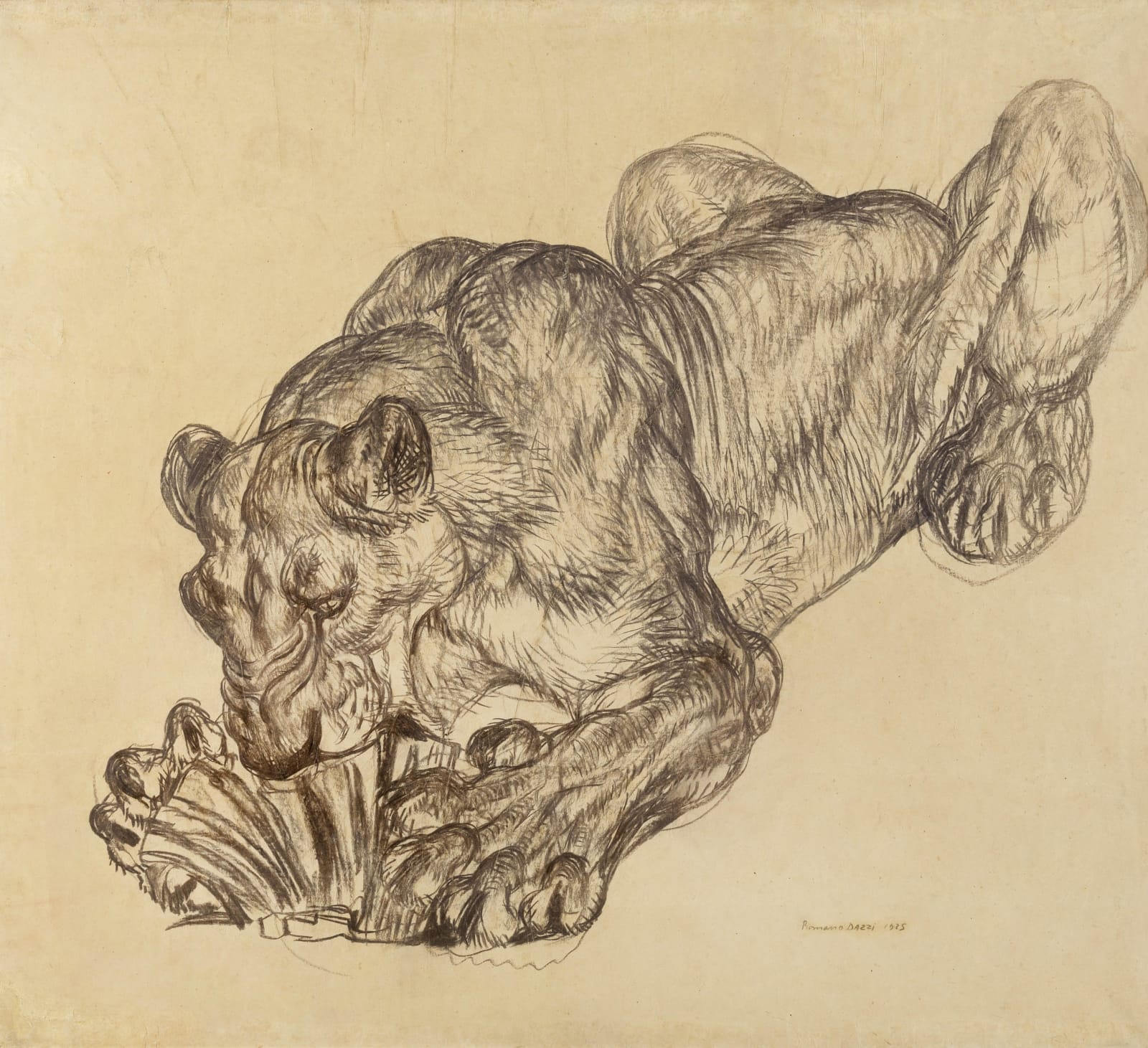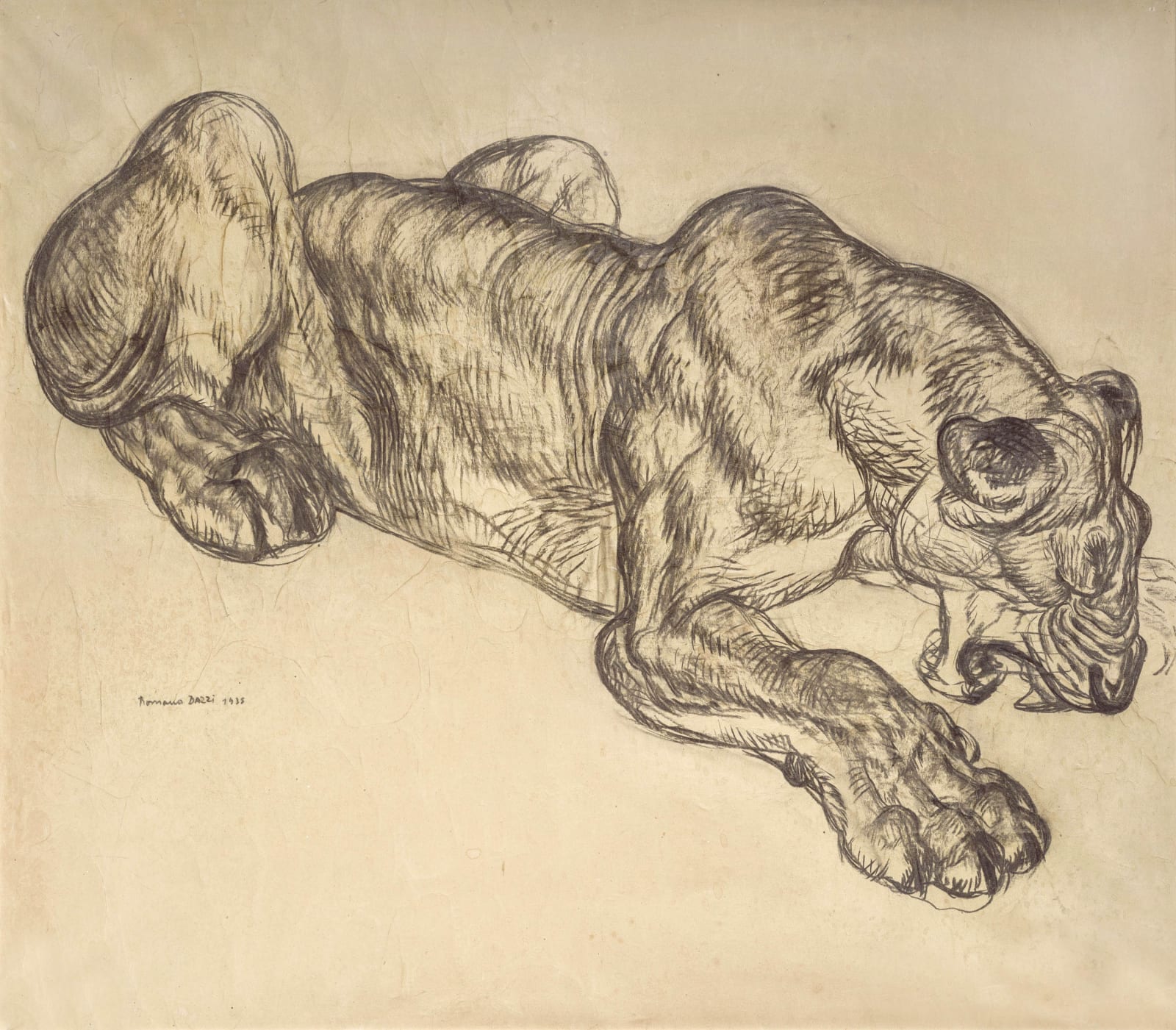

ROMANO DAZZI ROME 1905 -FLORENCE 1976
SOLD
Literature
Ugo Ojetti, I disegni di Romano Dazzi, Milan, Bassetti e Tumminelli, 1920, plate LI.
Disegni di Romano Dazzi, catalogue of the exhibition curated by Giovanna De Lorenzi (Florence, Uffizi, Gabinetto dei disegni e stampe), Florence, Olschki, 1987.
Giovanna De Lorenzi, Ugo Ojetti critico d’arte: dal Marzocco a Dedalo, Florence, Le Lettere, 2004.
Romano Dazzi, disegni, catalogue of the exhibition curated by Galleria Lapiccirella, (Rome, Palazzo Venezia) Florence, Lapiccirella, 2004.
Libero Andreotti, Antonio Maraini, Romano Dazzi, gli anni di Dedalo, catalogue of the exhibition curated by Francesca Antonacci and Giovanna Caterina de Feo (Rome, Galleria Francesca Antonacci, 14 May – 26 June 2009) Rome 2009.
Romano Dazzi, the son of well-known sculptor Arturo Dazzi, was born in Rome in 1905. He displayed considerable artistic talent from a very early age, and indeed the Galleria d’Arte Bragaglia held an exhibition of his work, showing fully one hundred and forty of his drawings, in 1919 when he was still aged only fourteen. The introduction to the catalogue was penned by Ugo Ojetti, one of many illustrious friends of the family. The exhibition, astonishingly, was a huge success both with the public and with the critics, many leading lights in the art world at the time considering young Dazzi to symbolise the new generation that came to maturity after the Great War. The artist’s favourite themes included chiefly combat scenes and superlative portraits of wild animals (which he had actually seen at the zoo in his home town, where he would spend the entire day drawing). Ojetti immediately noticed the boy’s prodigious talent and decided to follow his art career very closely. In those years Dazzi’s drawings were still marked by an immature style characterised by rapid, almost “Expressionist” draughtsmanship which failed to coincide with Ojetti’s calmer and more meditated taste. The critic thus endeavoured to prompt the lad to adopt a new form of expression, teaching him to govern the exuberance of his own creativity with the disciplining strength of style. The daily control that Ojetti exercised over the boy appeared to have a beneficial effect almost at once, yet Dazzi felt that Ojetti’s stylistic placidity was a far cry from his own temperament. The excuse to shake off this burdensome tutelage arrived in 1923, in the shape of an invitation from the Italian Government to join Marshal Graziani’s entourage in order to record his military expedition to Libya in a drawing campaign. The months that Dazzi spent in the desert were to have a lasting impact. The quality of the work spawned by that experience is simply astonishing, but it was not always in line with Ojetti’s precepts and so the two men’s relationship began to deteriorate. It was a bitter moment, and the critic was to build up a certain resentment towards his erstwhile protégé.
From then on, Dazzi began to focus on what were to become the hallmarks of his style: the depiction of movement, the unfinished feel and the idealisation of form.
It is to this second part of his life that this superb pair of charcoal drawings depicting Two Lionesses, the greatest expression of movement conveyed with immense freedom of the hand, belong. Dazzi returns to the interest in the depiction of movement that had been the focal point of his inspiration from his earliest years. After regaining full mastery over his instinctive and impetuous talent, Dazzi devoted ever greater energy and passion to portraying animals where, with rapid but unwavering hand, he captures both the beasts’ majesty and, at the same time, their charm and beauty.
Join the mailing list
Subscribe to our newsletter to receive all the news about exhibitions, fairs and new acquisitions!

